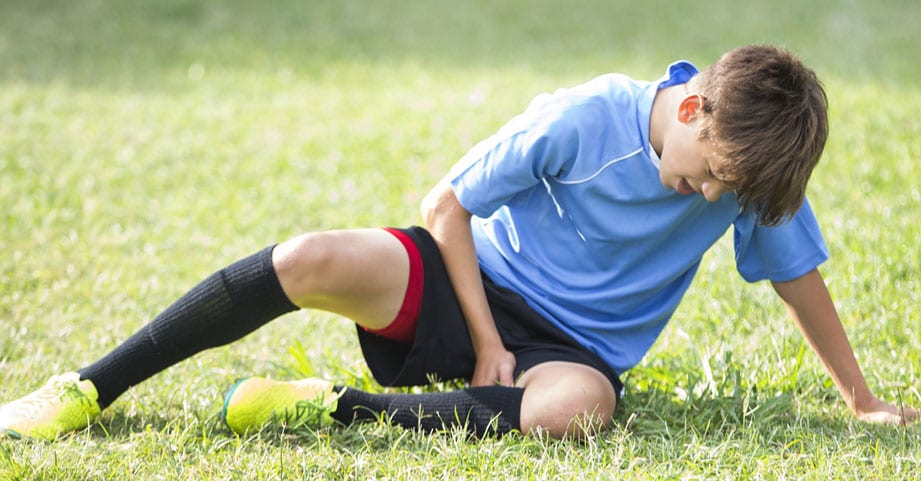Does your child play a sport year round? Have you noticed a decrease in their performance? Have you considered, what might be preventing your child to reach their optimal performance?

A range of 5-60% of competitive athletes suffer from Overtraining Syndrome worldwide.
Introduction
Overtraining Syndrome is a common condition that occurs in athletes who continue to participate in the same sport for a prolonged period and who are unaware of the symptoms of overreaching, which may result in a burnout or overuse musculoskeletal injuries. However, Overtraining Syndrome does not only affect the athlete physiologically, but it also causes psychological stress that suppresses their optimal performance capacity in sport. Stressors such as the athlete's parents, coaches or even the athlete themselves, create a high expectation causing the development of 'fear of failure' and the thought of not being 'good enough'. Due to this thought, athletes would overtrain their body, developing physiological affects that impacts their quality of sleep, nutrition, concentration, motivation, immune system and hormonal levels. Despite the signs and effects of Overtraining, acknowledging the causes of OTS will direct us to implement educational knowledge on what is needed to be done to prevent overreaching and burnouts from happening in youth athletes.
Practical Applications
Though OTS is not a complicated syndrome to understand and find, what can be complicated is the injury that may be present. What future practitioners can do is:
•Evaluate the type of injury the patient/athlete has.
•Look further into their workouts/routine.
•Identify any nutritional deficiencies in their diet.
•Have the patient improve their quality of sleep.
•Have the patient stop exercising and rest. (The amount of time spent overtraining determines the amount of rest required.)
Although overtraining syndrome had occurred in athletes, as stated by the authors in the articles I used for
this research, but it is very difficult to achieve true overtraining because the human body will make sure it
does not happen. But when it does, the options listed above is what they would want to do.
Resources
About the Author
Victor Simbana is a senior at
Westfield State University studying Sports Medicine. His future plan is to pursue a degree in Pediatric Occupational Therapy. Victor presented his leadership, integrity and resilient skills throughout Westfield State University in Residential Life and in LAFE (Latinx Association For Empowerment).
References
Brink, M. S., Visscher, C., Coutts, A. J., & Lemmink, K. A. (2010). Changes in perceived stress and recovery in overreached young elite soccer players. Scandinavian Journal of Medicine & Science in Sports, 22(2), 285–292. https://doi.org/10.1111/j.1600-0838.2010.01237.x
Cadegiani FA, Kater CE. Eating, sleep, and social patterns as independent predictors of clinical, metabolic, and biochemical behaviors among elite male athletes: The Eros-Predictors Study. Frontiers in Endocrinology. 2020;11. http://doi:10.3389/fendo.2020.00414
Cadegiani, F. (2021). Recovery from overtraining syndrome: Learnings from the EROS-Longitudinal Study. Overtraining Syndrome in Athletes, 155–166. https://doi.org/10.1007/978-3-030-52628-3_8
Chung, Y., Hsiao, Y.-T., & Huang, W.-C. (2021). Physiological and psychological effects of treadmill overtraining implementation. Biology, 10 (6), 515. https://doi.org/10.3390/biology10060515
Gustafsson, H., Sagar, S. S., & Stenling, A. (2016). Fear of failure, psychological stress, and burnout among adolescent athletes competing in high level sport. Scandinavian Journal of Medicine & Science in Sports, 27(12), 2091–2102. https://doi.org/10.1111/sms.1279
Guimarães, T. T., Terra, R., & Dutra, P. M. (2017). Chronic effects of exhausting exercise and overtraining on the immune response: Th1 and th2 profile. Motricidade, 13(3), 69. https://doi.org/10.6063/motricidade.10049 Mujika, I., Stellingwerff, T., & Tipton, K. (2014). Nutrition and training adaptations in Aquatic Sports. International Journal of Sport Nutrition and Exercise Metabolism, 24(4), 414–424. https://doi.org/10.1123/ijsnem.2014-0033


ReplyDeleteI have been looking around for this kind of information. Will you post some more in future? I’ll be grateful if you will.
Ophthalmic Equipment & Supplies